Oyster experts in Singapore tell you everything you need to know before you slurp.
Who doesn’t like oysters? (Photo: Humpback)
New: You can now listen to articles.
This audio is generated by an AI tool.
12 Nov 2025 07:25AM
Since my first taste of them in my late twenties, raw oysters have become my happy food, not only for their cool, briny charms, but for the bonus of being nutrient-dense and relatively low in calories (about 74 calories per 100g).
Among the more than 200 species of oysters in the world, the most famous include Fine de Claire from France, Pacific Northwest oysters from the United States, Sydney Rock oysters from Australia, and Miyagi oysters from Japan.
Over 95 per cent of the oysters we eat today…
Oyster experts in Singapore tell you everything you need to know before you slurp.
Who doesn’t like oysters? (Photo: Humpback)
New: You can now listen to articles.
This audio is generated by an AI tool.
12 Nov 2025 07:25AM
Since my first taste of them in my late twenties, raw oysters have become my happy food, not only for their cool, briny charms, but for the bonus of being nutrient-dense and relatively low in calories (about 74 calories per 100g).
Among the more than 200 species of oysters in the world, the most famous include Fine de Claire from France, Pacific Northwest oysters from the United States, Sydney Rock oysters from Australia, and Miyagi oysters from Japan.
Over 95 per cent of the oysters we eat today are farmed, which is a good thing since oyster farming is widely considered one of the most sustainable and regenerative forms of aquaculture. Yet, not all oysters are created equal.
OYSTERS AND WHY MERRIOR MATTERS
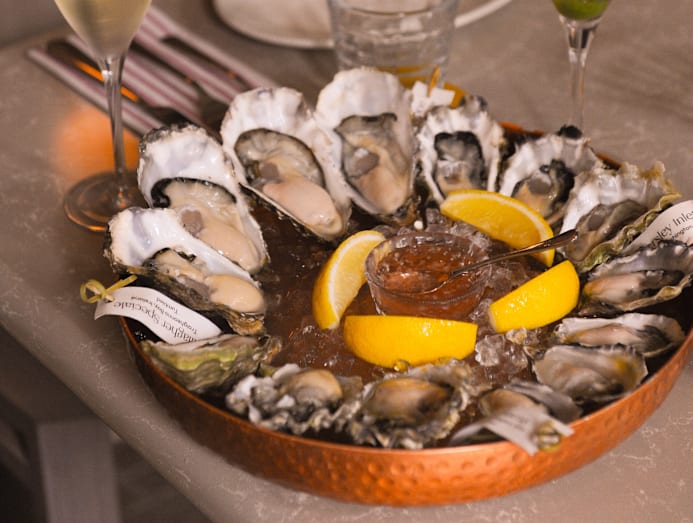 If wine has “terroir”, oysters have “merroir”. (Photo: Humpback)
If wine has “terroir”, oysters have “merroir”. (Photo: Humpback)
“Oysters have what you call merroir,” said Alynna Tan, chef de cuisine of Humpback, which serves oysters from the Hama Hama Company, a sixth-generation family-run business in Washington state, USA.
“Derived from the French word mer, which means ‘sea’, each oyster’s habitat creates a unique characteristic. [For example,] Japanese oysters, such as those from Hiroshima or Hyogo, tend to be rich and full of umami because of the cold, nutrient-dense waters. As they have a naturally creamy texture, they’re often served with a light ponzu to add brightness.”
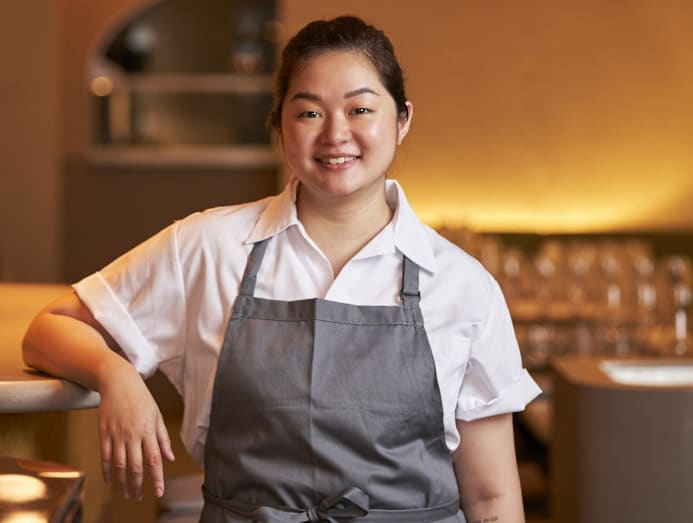 Humpback’s chef de cuisine Alynna Tan. (Photo: Humpback)
Humpback’s chef de cuisine Alynna Tan. (Photo: Humpback)
In contrast, French oysters, like Fine de Claires, are bold and briny thanks to higher salinity levels in Atlantic waters. A finishing process in French oyster farming, known as affinage en claires, where the oysters are moved to shallow clay ponds, allows the oysters to develop their distinctive flavour.
“Pacific Northwest oysters from the United States are more delicate and sweeter,” Tan continued. “Australian oysters, like Coffin Bay or Sydney Rock, are grown in mineral-dense estuaries so their flavour carries that minerality.”
Chefs at upscale restaurants like Jaan by Kirk Westaway and Julien Mercier of Claudine favour Irish oysters, particularly from a company called Huitres Cocollos, which farms their oysters on the west coast of Ireland for four years before harvesting.
“They have been my favourite oysters to work with over the past 10 years,” said Westaway. “They are incredibly clean, with a delicious salinity, perfect sweetness and outstanding quality.”
HOW TO TELL IF AN OYSTER IS FRESH
Smell is the best indication of an oyster’s edibility. If an oyster holds the remotest whiff of funk, throw it out. Because a bad oyster can lead to terrible food poisoning, a risk simply not worth taking. So, how to identify a fresh oyster?
“A good oyster should remind you of the sea; that kind of brine so clean that it carries a faint sweetness,” said Tan. “It should carry a good weight in relation to the size of its shell. Its meat should be plump and glistening, and the shell should contain its oyster liquor. The easiest way to identify a bad oyster is by doing a quick sniff test. If you are even a little bit unsure about the freshness of an oyster, it’s best to discard it.”
 Greenwood Fish Market’s Chef Alan Lee. (Photo: Greenwood Fish Market)
Greenwood Fish Market’s Chef Alan Lee. (Photo: Greenwood Fish Market)
Chef Alan Lee of Greenwood Fish Market, which has run the annual World Oyster Festival for the past 13 years, added: “An oyster should be tightly closed, or if slightly open, should react and close when tapped. That’s how you know it’s still alive. A good oyster feels heavy in the hand. That means it’s full of natural liquor and meaty inside.”
BEST TIME AND WAY TO SHUCK AN OYSTER
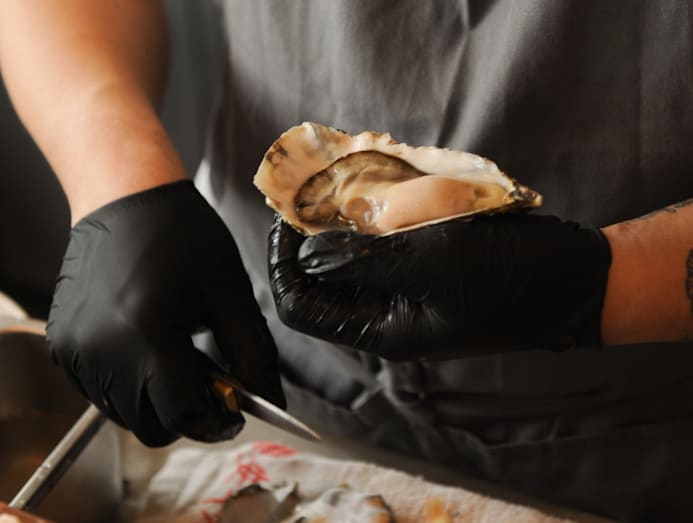 Oysters should ideally be shucked right before consumption, not hours in advance. (Photo: Humpback)
Oysters should ideally be shucked right before consumption, not hours in advance. (Photo: Humpback)
How and when an oyster is shucked make a difference to the eating experience. “Ideally, oysters should be shucked right before consumption, not hours in advance,” said Lee. “The real concern is how carefully they’re shucked. You don’t want the body to be punctured, or shell fragments left behind. And the worst sin is washing the oyster with tap water, which destroys its natural flavour.”
To shuck an oyster properly, Tan advises using an oyster knife and a thick towel or glove to prevent cutting your hand.
“Insert the knife tip into the hinge and twist gently until it opens. Slide the knife along the top shell to sever the adductor muscle. After opening, remove any shell fragments, preserve the oyster liquor, and flip over the oyster meat before serving. Some oysters have more brittle shells, and some are odd-shaped, so it is important not to use too much force and to look for the hinge before you stick your knife in. It might take a couple of tries.”
If you’re thinking of buying shucked oysters for dining on at home, chef Michael Wilson of Marguerite Restaurant pleads against it. “My advice is never, ever buy a pre-shucked oyster. If you get them from a fishmonger and they shuck them for you fresh, that’s a different story. But those plastic-tray ones? No way, Jose,” he said.
WHAT’S THE BEST WAY TO ENJOY OYSTERS?
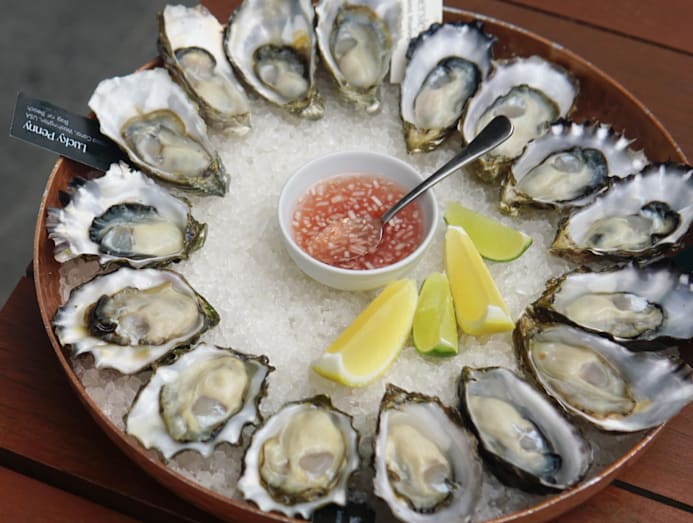 Do you enjoy your oysters with lemon or mignonette? (Photo: Humpback)
Do you enjoy your oysters with lemon or mignonette? (Photo: Humpback)
While the most common way to enjoy an oyster is with a spritz of lemon, Wilson has a controversial take on this classic approach.
“I can’t stand lemon with oysters,” he said. “I think the world has been conditioned to accept it, but to me it’s like being back in a dentist’s chair with that sharp lemony saline rinse flooding your mouth. Don’t do it. Instead, dress them with a classic mignonette. That gentle, sweet acidity enhances their minerality and natural brine, letting the oyster truly shine.”
Lee, meanwhile, believes that oyster condiment pairings should be treated like wine. “Some oysters are elevated with salty or citrus elements, like shoyu or a squeeze of lemon,” he said.
“Others pair beautifully with the creamy, nutty flavours of caviar – I find this works especially well with US West Coast oysters. Asian salsas or a touch of chilli can complement certain varietals too. The pairings mostly depend on the flavour and texture profile of the oyster varietal that you’re working with. But honestly, when you get good oysters, the best way is natural – nothing beats the pure flavour of the sea.”
Cooking oysters works well too, though some are more suited to the heat than others. When Miyagi oysters come through her pantry, Akane Eno, the executive chef of Ichigo Ichie, batters and deep-fries them to a golden crunch. “The texture is so satisfying and (frying) really brings out their richness,” she said.
Nicholas Loh, chef de cuisine of Colony at Ritz-Carlton Millenia Singapore, added: “If you’re having fun eating oysters, then you’re enjoying them the right way!”
WHERE TO ENJOY OYSTERS IN SINGAPORE
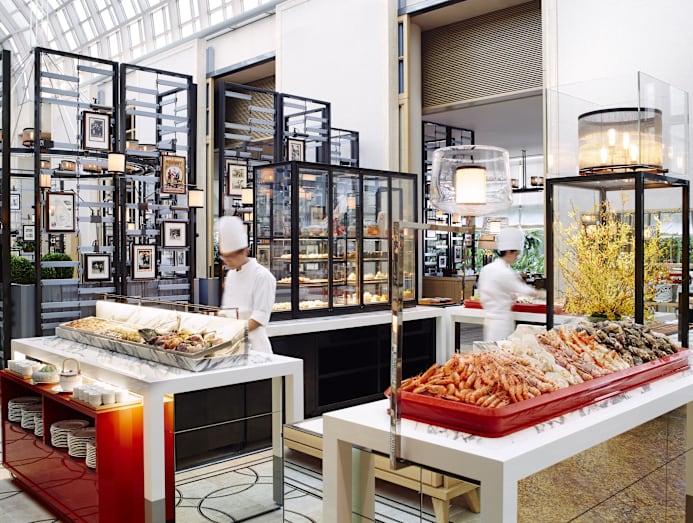 Colony has a regular Sunday Champagne Brunch. (Photo: Colony)
Colony has a regular Sunday Champagne Brunch. (Photo: Colony)
For a decadent experience, head to the Sunday Champagne Brunch at Colony (from S$228 per person), where Loh and his team serve as many Tasmanian oysters as you can eat. Australian oysters are also on the buffet dinner line from Sunday to Thursday (from S$96 per person).
Estate at Hilton Singapore Orchard serves French oysters from Les Huitres Cadoret, which are cultivated in the waters of Brittany and refined in the Belon River, at dinner (from S$98) and Sunday Brunch (from S$138).
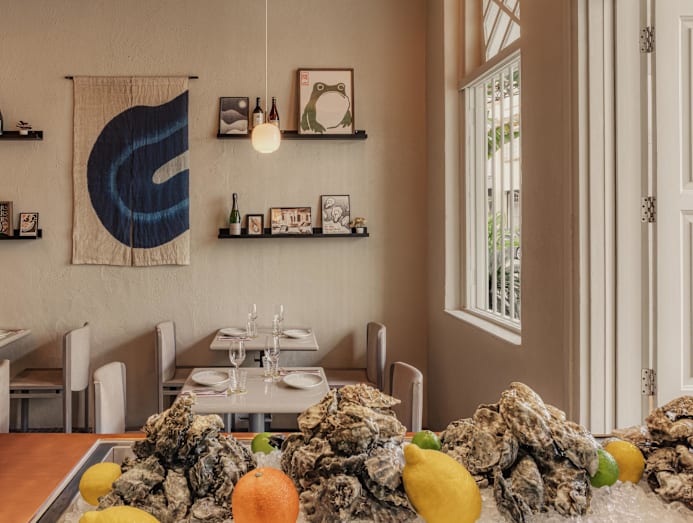 (Photo: Humpback)
(Photo: Humpback)
Humpback’s ever-rotating list includes seasonal picks from Hama Hama in Washington state (prices start from S$2 during Happy Hour; from S$6 at regular hours). “My personal favourites are Aphrodite, Blue Pool, and Swinomish,” said Tan. “Aphrodite oysters are crisp, briny and finish sweet. Swinomish oysters are clean, sweet, with hints of cantaloupe, and are in their peak season in the winter months, so I’m looking forward to having that soon.”
The line-up at Greenwood Fish Market changes throughout the year to reflect what’s best every season (prices start from S$4.95). “On a typical day, you’ll find four to six available varietals. Our range includes Mary Point, Barron Point, Fine de Claire, and Krystale N3 and 1 (one of the best in class for meat and complex flavours).” Dine at Greenwood Fish Market’s eight-seat Oyster bar at its Quayside Isle outlet and the house oysters go for S$2.50 a piece (no minimum spend required).
Other restaurants specialising in oysters or with oyster specials include The Oyster Bank at Funan and Tanjong Pagar, Culina Bistro, Estuary Restaurant & Bar, Joo Chiat Oyster House, and Kura Oyster and High Ball Bar.
Source: CNA/mm